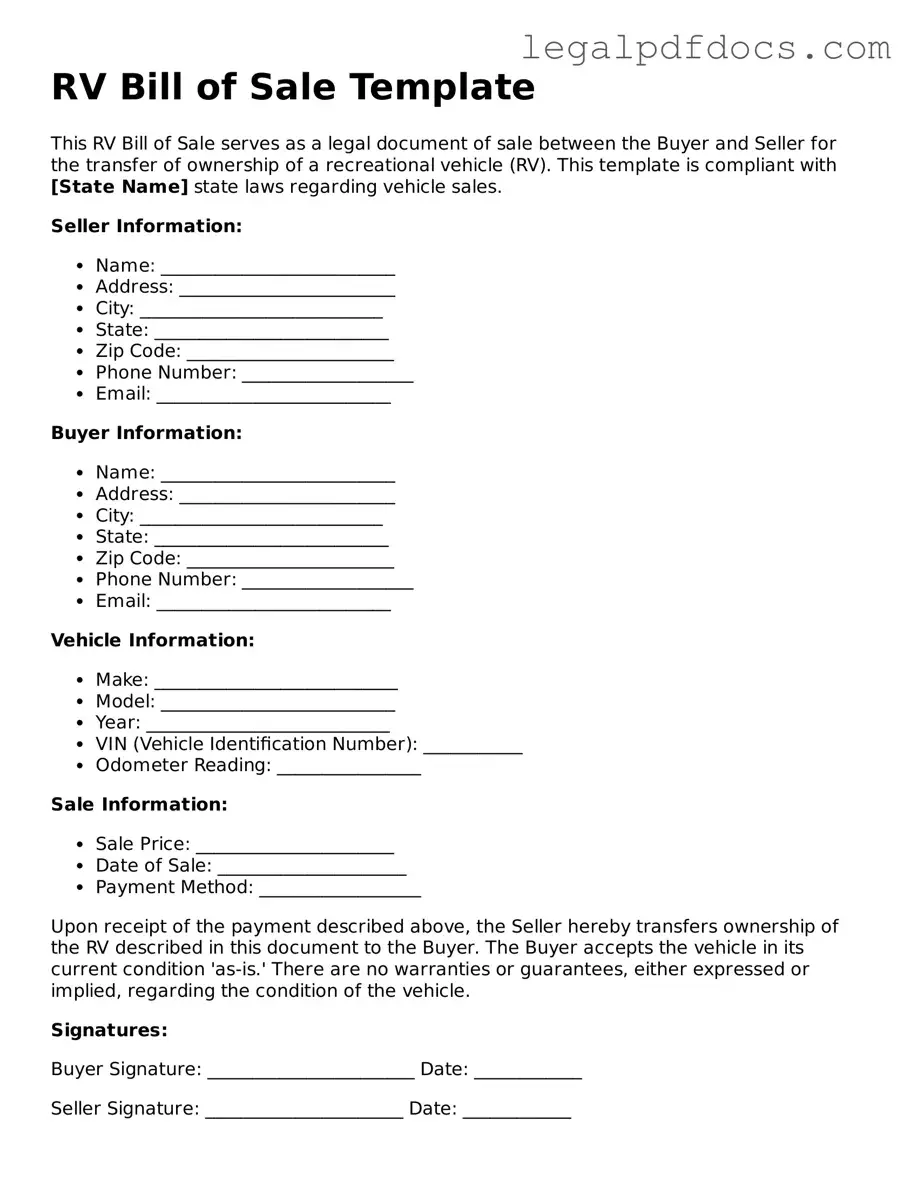RV Bill of Sale Template
An RV Bill of Sale is a legal document that records the sale of a recreational vehicle, ensuring that both the buyer and seller have a clear understanding of the transaction. This form serves as proof of ownership transfer and can be crucial for registration and title purposes. To facilitate your RV sale, consider filling out the form by clicking the button below.
Open RV Bill of Sale Editor Here
